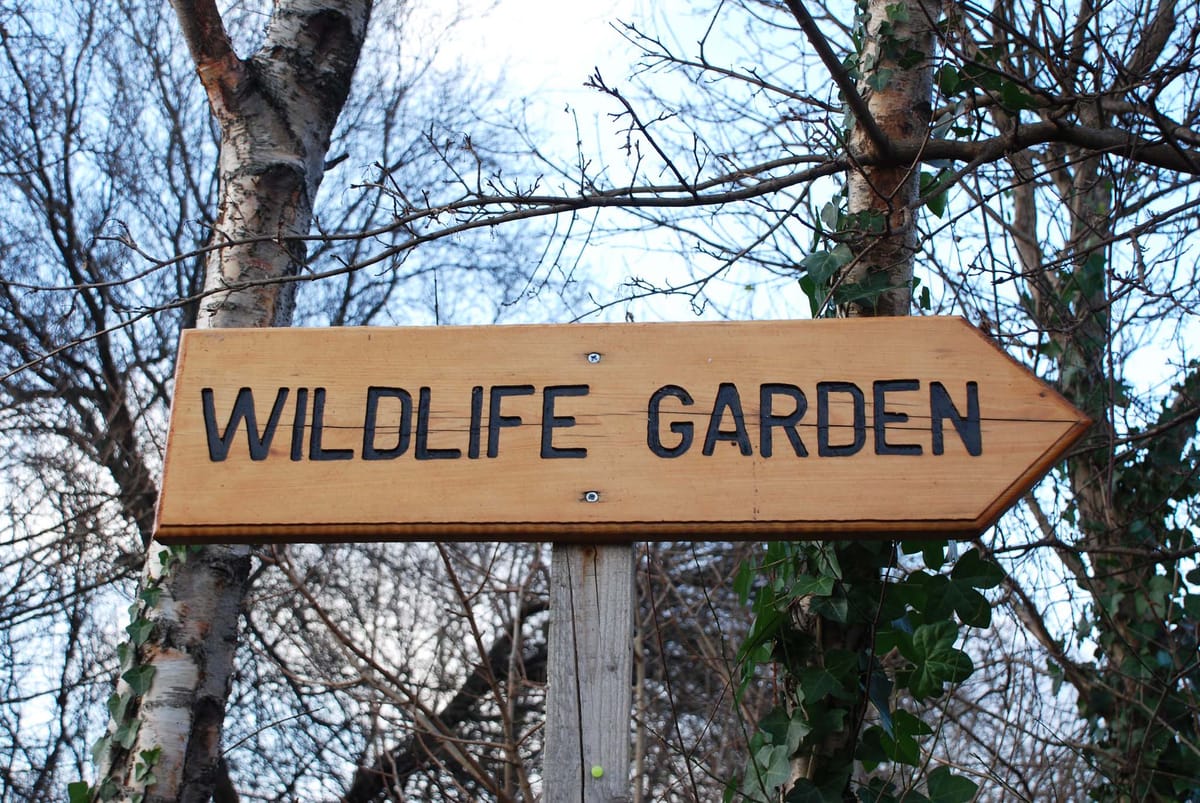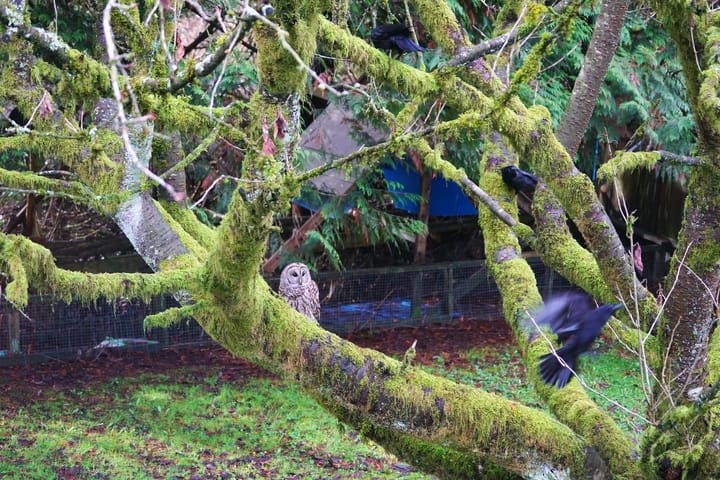5 easy ways to boost biodiversity in your yard
Make your property a better wildlife habitat with these simple tips.

This is an excerpt from new book From Wasteland to Wonder by Basil Camu, which is available for free in its ebook format. “I wrote this book because traditional landscape management practices harm life and exacerbate serious environmental issues,” he says. “In short, we spend time and money to cause harm. This book offers alternative practices that work with natural systems instead of against them. These approaches are cheaper, easier, help heal life, alleviate serious environmental issues, and can be performed by anyone regardless of knowledge or expertise.”
There are all sorts of fun and easy things we can do on our property to promote even more abundance and diversity of life! What’s good for bats and beetles is also good for trees, soil, water availability and carbon sequestration. Aside from improving the health of Earth, promoting more life means more twittering birds during the day and more glowing fireflies at night. Yes, please!
A quick note about the ideas that follow. I’m only featuring a handful of my favourites that also happen to be easy. There are many other impactful things we can do that are not included here, such as reducing pollution in waterways, building rain gardens and creating wildlife corridors.

Retain all organic matter
We can do more than retain grass clippings, leaves and kitchen waste. We can retain all organic matter from our property. If it’s organic, it rots and supports more diversity in the process. This includes all branches and logs.
We can use branches, stalks and stems to form a brush pile behind or near the pallets that hold our compost. A brush pile provides food and shelter for birds, all sorts of insects, chipmunks, salamanders, turtles and other life. It also supports possums, hawks and raccoons that feed on the creatures that live in the brush pile. Worried what neighbours or clients think? Put up an educational sign. Or hide the pile out of sight.
Logs and chunks of wood create another thriving ecosystem for frogs, lizards and fungi. In particular, logs are excellent for supporting beetles. Beetles help facilitate the breakdown of organic matter by eating pollen, leaves, fruit, dung and rotting wood. They also prey on pests, pollinate plants by patrolling across flowers and help control weeds by eating their seeds. We can stack logs and chunks of wood behind or near the compost pile. We can also use sections of logs to create beautiful borders around or between spaces. We can either lay them on their long sides or stack them vertically on their short ends depending on how much wood we have available. This accomplishes an aesthetic objective while also providing extra habitat for more ecology. Win-win!
This can be done on any property, whether at a home or commercial site. Our goal should be to prevent any organic matter from leaving the property. This boosts the abundance and diversity of life, sequesters more carbon and reduces the CO2 emissions associated with having those materials moved to the landfill or yard waste centre.

Create understory layers
An understory layer is one or multiple layers of plants underneath larger plants. For example, planting flowers and a dogwood under an existing white oak creates two new understory layers. I often see trees in the landscape with nothing growing underneath. This is the perfect place to plant smaller trees, shrubs and flowers. These new plant layers benefit insects (and all the life that rely on insects for food) because many insects need an understory layer to complete their life cycles. For example, many caterpillars feed on the canopy of a large tree and then drop to attach themselves to smaller plants below where they transform into butterflies and moths. If these layers do not exist, these caterpillars will die.

Leave the dead stems
Traditional landscape paradigms recommend cutting dead flower stalks, removing seed heads and generally cleaning dead material from the landscape every year. But these dead plants are so important for housing insects and their young through the dormant season. All the life we see during the growing season still exists within the landscape during the dormant season, but it is quietly hidden away in its dead cracks and crevices – the very material that traditional landscaping practices would have us cut and remove.
We can either leave them in place permanently (they will eventually rot), or remove them when the growing season begins, which gives the insect a chance to emerge. If these options are not possible, then stage the plant material in a pile somewhere on the property since some of the insects and their young will survive.

Install houses and hotels
We can buy or build all sorts of specialized houses to help bats, birds, owls and various pollinators. I especially love hotels for native bees. They come in all shapes and varieties. They usually include wood, bricks, tubes, straw, pinecones and other nooks and crannies for native bees and other pollinators to call home. They are not suitable replacements for natural, high-quality habitat, but they certainly help.
Xerces Society offers several free plans and specifications online. We can find countless other resources on YouTube and the internet in general.
Turn off exterior lights at night
Light pollution is devastating insects, birds, bats, amphibians and all sorts of other life. It can affect reproduction, nourishment, sleeping, predation and more. Here are some examples from the world of insects:
- Many moths and other nighttime insects are drawn to lights, thinking they are the moon. They swirl around the light all night, flying to exhaustion. Up to one-third of these insects will be dead by morning, either from exhaustion or being picked off by predators.
- Lights interfere with insects that rely on bioluminescence to attract mates, such as fireflies.
- Insects often confuse light reflections on streets and sidewalks with bodies of water, causing them to lay eggs on hardscapes instead of in streams.
- Insects are attracted to headlights—for example, 100 billion insects die on German highways each year due to headlights.

There are many other types of life that are affected, including birds, bats, frogs and turtles. Lights alter the path of migrating birds, confuse sea turtles laying eggs and deprive daytime-loving species of sleep. As we increasingly light up the night sky – and nearly 20 percent of the planet’s land surface is now affected by light pollution – we throw more natural ecosystems into chaos.
There are easy ways we can help. We can get rid of any outdoor lighting that is not necessary for safety or accessibility. For any remaining lights, we can make sure they are on timers or, better yet, motion activated. We can trade traditional bulbs for red bulbs, which are less damaging. We can petition our city to transition to motion-activated streetlights and to require all businesses and buildings to turn off lights at night.
If we could accomplish this goal, we could also gaze up at space each night and stare in awe at a galaxy full of stars. To those of you who already have access to these views, I’m jealous. I am not able to see more than a handful of stars here in Raleigh due to light pollution.













Comments ()